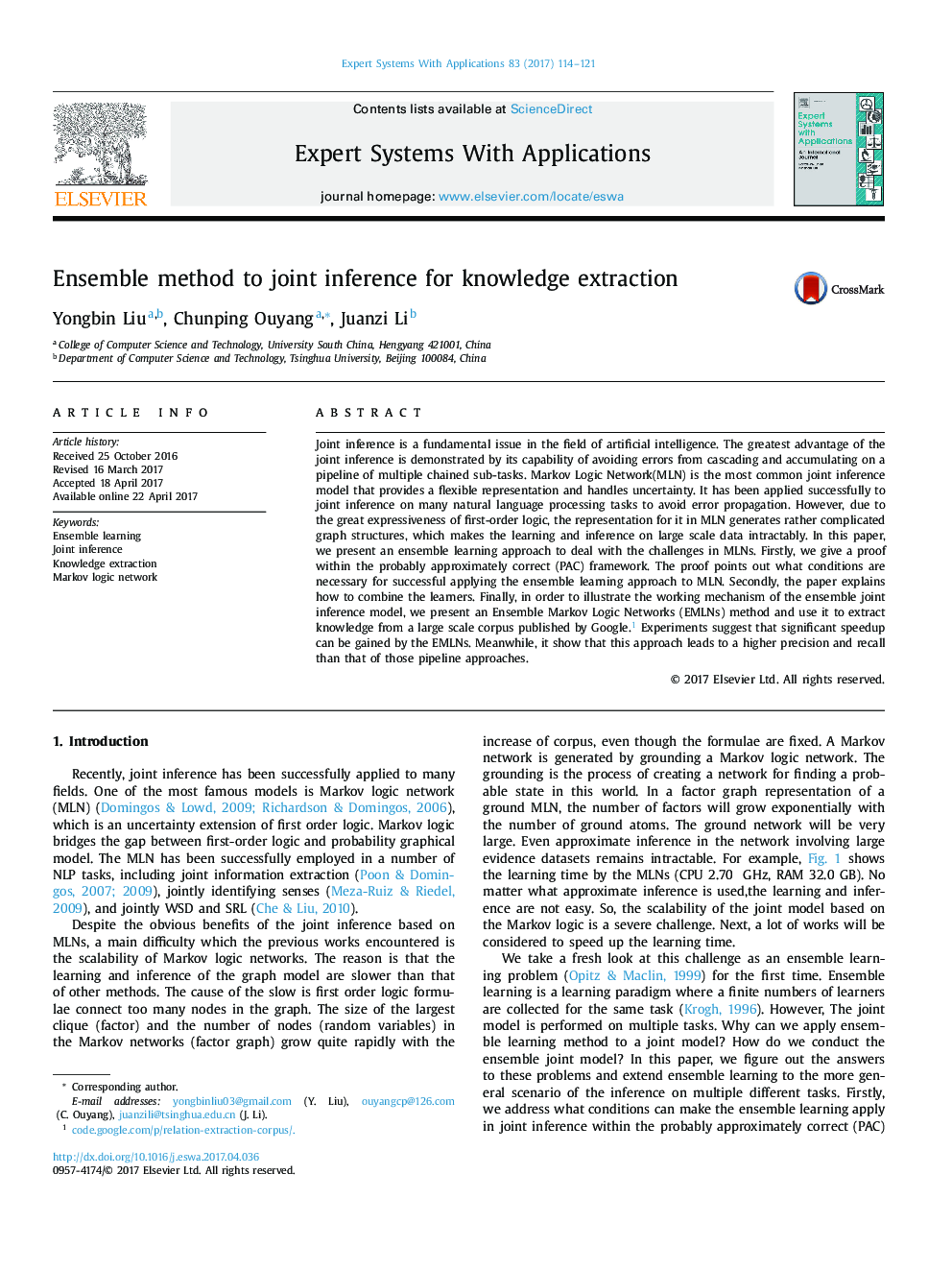| Article ID | Journal | Published Year | Pages | File Type |
|---|---|---|---|---|
| 4943079 | Expert Systems with Applications | 2017 | 8 Pages |
Abstract
Joint inference is a fundamental issue in the field of artificial intelligence. The greatest advantage of the joint inference is demonstrated by its capability of avoiding errors from cascading and accumulating on a pipeline of multiple chained sub-tasks. Markov Logic Network(MLN) is the most common joint inference model that provides a flexible representation and handles uncertainty. It has been applied successfully to joint inference on many natural language processing tasks to avoid error propagation. However, due to the great expressiveness of first-order logic, the representation for it in MLN generates rather complicated graph structures, which makes the learning and inference on large scale data intractably. In this paper, we present an ensemble learning approach to deal with the challenges in MLNs. Firstly, we give a proof within the probably approximately correct (PAC) framework. The proof points out what conditions are necessary for successful applying the ensemble learning approach to MLN. Secondly, the paper explains how to combine the learners. Finally, in order to illustrate the working mechanism of the ensemble joint inference model, we present an Ensemble Markov Logic Networks (EMLNs) method and use it to extract knowledge from a large scale corpus published by Google.1 Experiments suggest that significant speedup can be gained by the EMLNs. Meanwhile, it show that this approach leads to a higher precision and recall than that of those pipeline approaches.
Related Topics
Physical Sciences and Engineering
Computer Science
Artificial Intelligence
Authors
Yongbin Liu, Chunping Ouyang, Juanzi Li,
